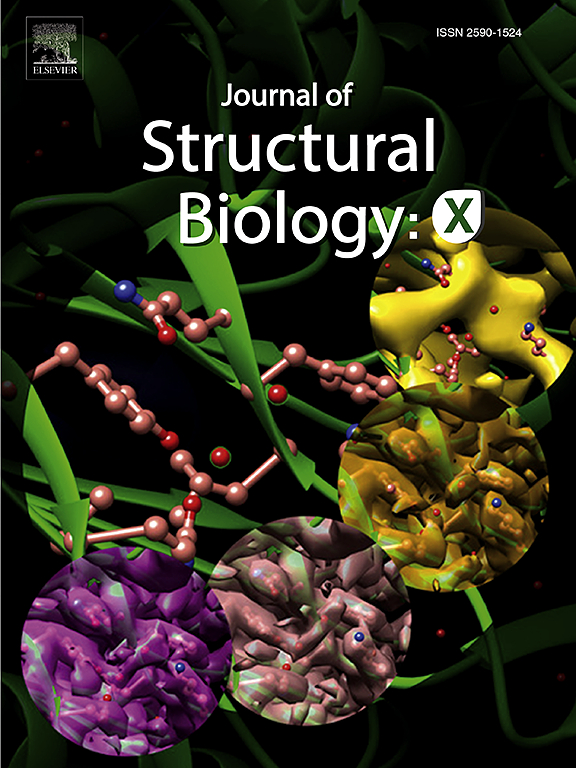设计抗SARS-CoV-2刺突糖蛋白多表位疫苗的B细胞和t细胞表位的计算鉴定
IF 2.7
3区 生物学
Q3 BIOCHEMISTRY & MOLECULAR BIOLOGY
引用次数: 0
摘要
虽然COVID-19大流行的高峰已经过去,但严重急性呼吸综合征冠状病毒2型(SARS-CoV-2)继续构成重大全球威胁,仍然是一个公共卫生问题。鉴于该病毒造成的持续风险和大量生命损失,对疫苗开发的持续研究至关重要。本研究采用免疫信息学方法鉴定t细胞和b细胞表位,设计针对Omicron变异的多表位肽候选疫苗。所提出的疫苗结构包括1435个氨基酸,包括8个线性B淋巴细胞、7个细胞毒性T淋巴细胞和5个辅助T淋巴细胞表位,以及适当的佐剂和连接体。该疫苗具有高抗原性、无致敏性、无毒性和良好的理化性质。为了进一步评估其有效性,进行了分子对接研究,以研究疫苗与关键免疫成分(包括toll样受体和主要组织相容性复合体分子)之间的相互作用。使用GROMACS 2023进行了超过100 ns的三次分子动力学模拟,确认了这些相互作用的稳定性,并计算了关键指标,如均方根偏差、均方根波动、溶剂可及表面积和旋转半径。结果表明,该多表位疫苗有可能引发针对Omicron变体的强免疫应答,为进一步的实验验证和COVID-19疫苗研究提供了有希望的基础。本文章由计算机程序翻译,如有差异,请以英文原文为准。

Computational identification of B and T-cell epitopes for designing a multi-epitope vaccine against SARS-CoV-2 spike glycoprotein
Although the peak of the COVID-19 pandemic has passed, severe acute respiratory syndrome coronavirus 2 (SARS-CoV-2) continues to pose a significant global threat and remains a public health concern. Given the ongoing risk and the substantial loss of life caused by the virus, continuous research into vaccine development is essential. This study employs immunoinformatics approaches to identify T-cell and B-cell epitopes for designing a multi-epitope peptide vaccine candidate targeting the Omicron variant. The proposed vaccine construct comprises 1435 amino acids, including eight linear B lymphocyte, seven cytotoxic T lymphocyte, and five helper T lymphocyte epitopes, along with appropriate adjuvants and linkers. The evaluation of the vaccine revealed high antigenicity, non-allergenicity, non-toxicity, and favorable physicochemical properties. To further assess its efficacy, molecular docking studies were performed to investigate interactions between the vaccine and key immune components, including Toll-like receptors and major histocompatibility complex molecules. Stability of these interactions was confirmed using molecular dynamics simulations in triplicate, conducted over 100 ns using GROMACS 2023 to compute key metrics, such as root mean square deviation, root mean square fluctuation, solvent-accessible surface area, and radius of gyration. The results demonstrate that the multi-epitope vaccine has the potential to elicit strong immune responses against the Omicron variant, providing a promising foundation for further experimental validation and clinical development in COVID-19 vaccine research.
求助全文
通过发布文献求助,成功后即可免费获取论文全文。
去求助
来源期刊

Journal of structural biology
生物-生化与分子生物学
CiteScore
6.30
自引率
3.30%
发文量
88
审稿时长
65 days
期刊介绍:
Journal of Structural Biology (JSB) has an open access mirror journal, the Journal of Structural Biology: X (JSBX), sharing the same aims and scope, editorial team, submission system and rigorous peer review. Since both journals share the same editorial system, you may submit your manuscript via either journal homepage. You will be prompted during submission (and revision) to choose in which to publish your article. The editors and reviewers are not aware of the choice you made until the article has been published online. JSB and JSBX publish papers dealing with the structural analysis of living material at every level of organization by all methods that lead to an understanding of biological function in terms of molecular and supermolecular structure.
Techniques covered include:
• Light microscopy including confocal microscopy
• All types of electron microscopy
• X-ray diffraction
• Nuclear magnetic resonance
• Scanning force microscopy, scanning probe microscopy, and tunneling microscopy
• Digital image processing
• Computational insights into structure
 求助内容:
求助内容: 应助结果提醒方式:
应助结果提醒方式:


